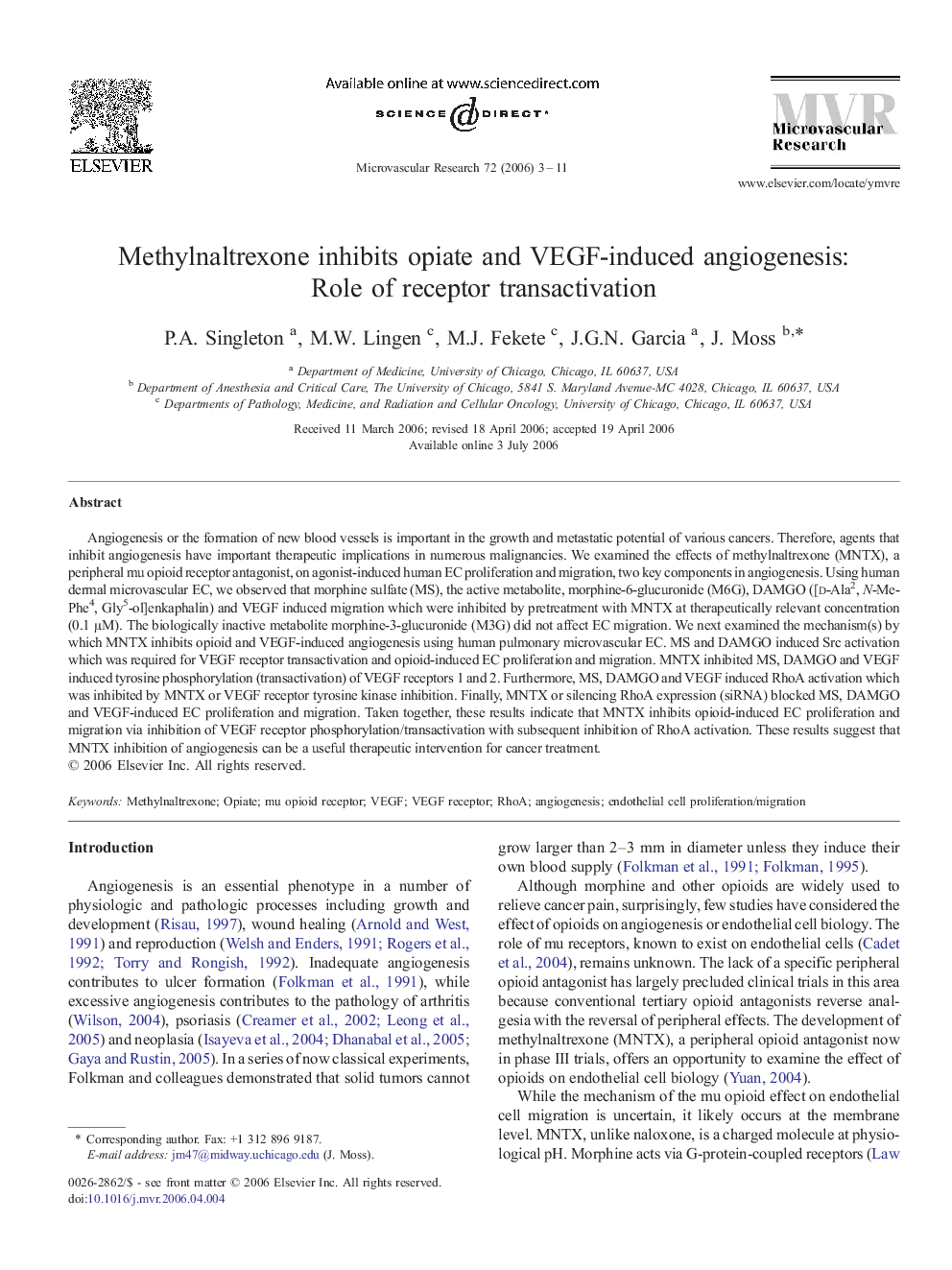| Article ID | Journal | Published Year | Pages | File Type |
|---|---|---|---|---|
| 1995541 | Microvascular Research | 2006 | 9 Pages |
Angiogenesis or the formation of new blood vessels is important in the growth and metastatic potential of various cancers. Therefore, agents that inhibit angiogenesis have important therapeutic implications in numerous malignancies. We examined the effects of methylnaltrexone (MNTX), a peripheral mu opioid receptor antagonist, on agonist-induced human EC proliferation and migration, two key components in angiogenesis. Using human dermal microvascular EC, we observed that morphine sulfate (MS), the active metabolite, morphine-6-glucuronide (M6G), DAMGO ([d-Ala2, N-Me-Phe4, Gly5-ol]enkaphalin) and VEGF induced migration which were inhibited by pretreatment with MNTX at therapeutically relevant concentration (0.1 μM). The biologically inactive metabolite morphine-3-glucuronide (M3G) did not affect EC migration. We next examined the mechanism(s) by which MNTX inhibits opioid and VEGF-induced angiogenesis using human pulmonary microvascular EC. MS and DAMGO induced Src activation which was required for VEGF receptor transactivation and opioid-induced EC proliferation and migration. MNTX inhibited MS, DAMGO and VEGF induced tyrosine phosphorylation (transactivation) of VEGF receptors 1 and 2. Furthermore, MS, DAMGO and VEGF induced RhoA activation which was inhibited by MNTX or VEGF receptor tyrosine kinase inhibition. Finally, MNTX or silencing RhoA expression (siRNA) blocked MS, DAMGO and VEGF-induced EC proliferation and migration. Taken together, these results indicate that MNTX inhibits opioid-induced EC proliferation and migration via inhibition of VEGF receptor phosphorylation/transactivation with subsequent inhibition of RhoA activation. These results suggest that MNTX inhibition of angiogenesis can be a useful therapeutic intervention for cancer treatment.
